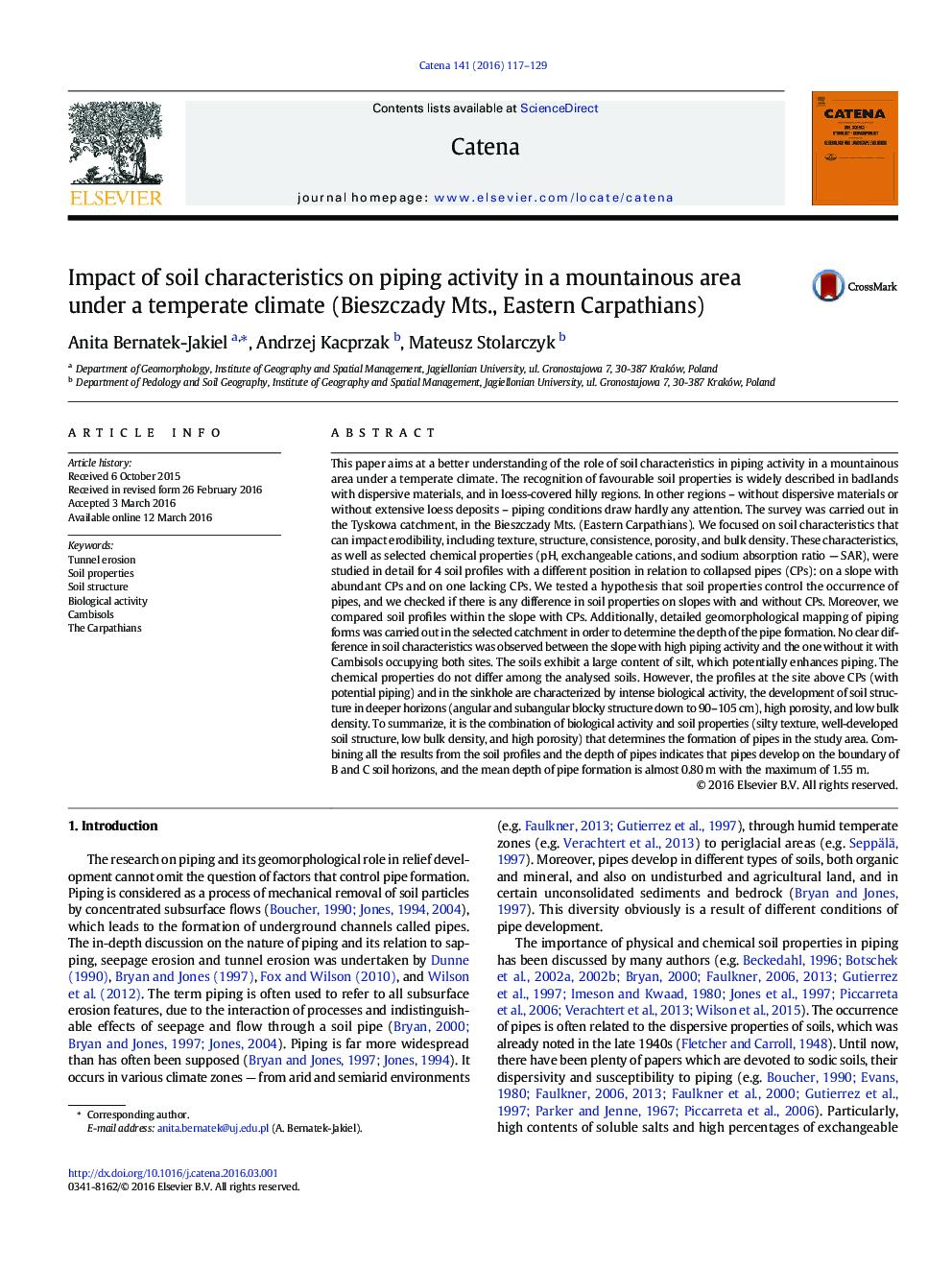| کد مقاله | کد نشریه | سال انتشار | مقاله انگلیسی | نسخه تمام متن |
|---|---|---|---|---|
| 6407913 | 1629211 | 2016 | 13 صفحه PDF | دانلود رایگان |

- Pipes in the investigated Cambisols develop on the boundary of B and C soil horizons.
- Silty texture, well-developed soil structure, low bulk density, and high porosity favour piping.
- High biological activity impacts piping.
- Chemical soil properties in Cambisols do not impact their susceptibility to piping.
This paper aims at a better understanding of the role of soil characteristics in piping activity in a mountainous area under a temperate climate. The recognition of favourable soil properties is widely described in badlands with dispersive materials, and in loess-covered hilly regions. In other regions - without dispersive materials or without extensive loess deposits - piping conditions draw hardly any attention. The survey was carried out in the Tyskowa catchment, in the Bieszczady Mts. (Eastern Carpathians). We focused on soil characteristics that can impact erodibility, including texture, structure, consistence, porosity, and bulk density. These characteristics, as well as selected chemical properties (pH, exchangeable cations, and sodium absorption ratio - SAR), were studied in detail for 4 soil profiles with a different position in relation to collapsed pipes (CPs): on a slope with abundant CPs and on one lacking CPs. We tested a hypothesis that soil properties control the occurrence of pipes, and we checked if there is any difference in soil properties on slopes with and without CPs. Moreover, we compared soil profiles within the slope with CPs. Additionally, detailed geomorphological mapping of piping forms was carried out in the selected catchment in order to determine the depth of the pipe formation. No clear difference in soil characteristics was observed between the slope with high piping activity and the one without it with Cambisols occupying both sites. The soils exhibit a large content of silt, which potentially enhances piping. The chemical properties do not differ among the analysed soils. However, the profiles at the site above CPs (with potential piping) and in the sinkhole are characterized by intense biological activity, the development of soil structure in deeper horizons (angular and subangular blocky structure down to 90-105Â cm), high porosity, and low bulk density. To summarize, it is the combination of biological activity and soil properties (silty texture, well-developed soil structure, low bulk density, and high porosity) that determines the formation of pipes in the study area. Combining all the results from the soil profiles and the depth of pipes indicates that pipes develop on the boundary of B and C soil horizons, and the mean depth of pipe formation is almost 0.80Â m with the maximum of 1.55Â m.
Journal: CATENA - Volume 141, June 2016, Pages 117-129